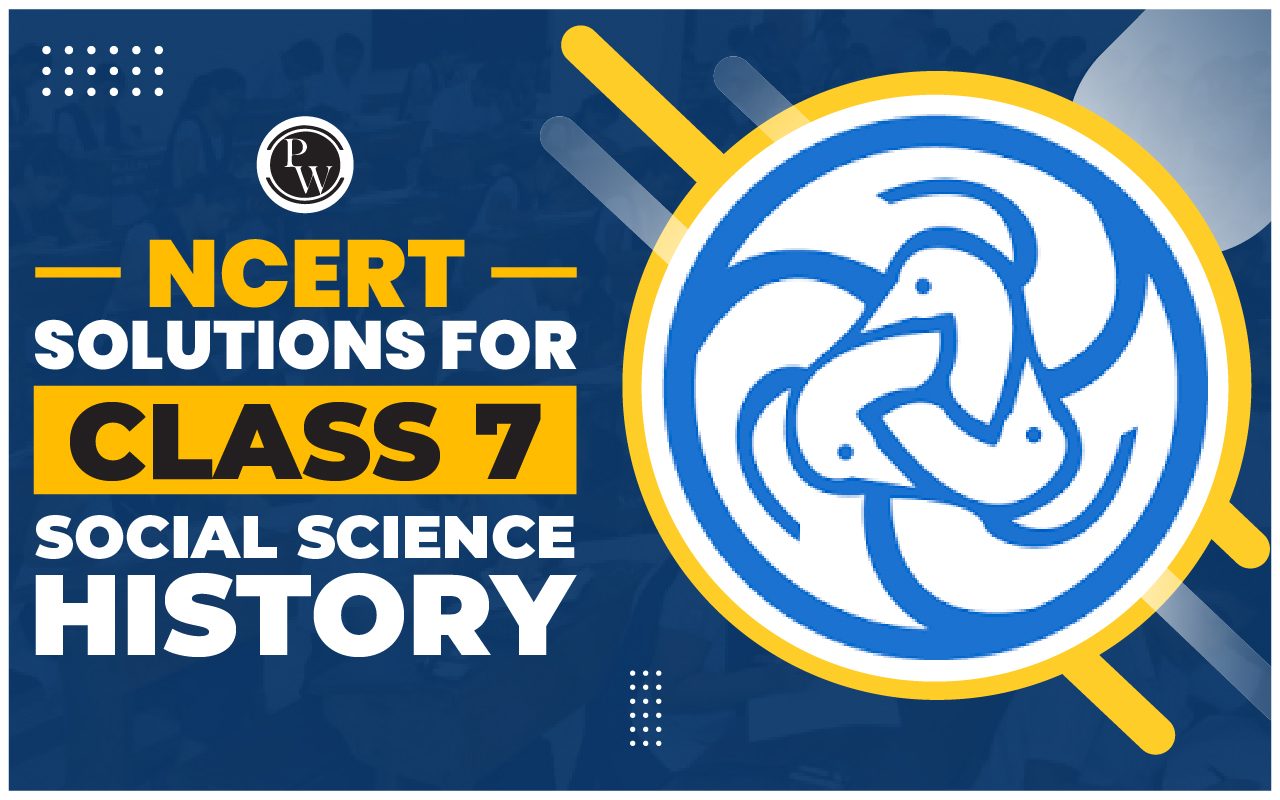

NCERT Solutions for Class 7 Social Science Exploring Society India and Beyond help students understand the syllabus in an easy way. The solutions cover all chapters from geography, history, civics and economics. They give clear answers to textbook questions and make it simple for students to study, revise and prepare for exams.
NCERT Solutions for Class 7th Social Science
NCERT Class 7 Social Science is designed to help students cover the full syllabus of Exploring Society India and Beyond Class 7.
With the detailed chapter overview given below, students can connect lessons with real-life examples and prepare better for exams. The solutions not only answer textbook questions but also guide students in revising the entire syllabus step by step.
Chapter 1 Geographical Diversity of India
This chapter highlights how India is a land of great geographical variety. Students learn about the Himalayas in the north, the fertile plains of the Ganga, the deserts of Rajasthan, the plateaus of the Deccan and the long coastline.
It explains how geography influences food, clothes, housing, farming and culture. For example people in mountains depend on wool while those in coastal areas eat more fish. The chapter also shows how diversity is India’s strength.
Chapter 2 Understanding the Weather
Students understand the concept of weather which includes daily changes in temperature, rainfall, wind, and humidity. It explains how weather is measured using instruments like thermometers, barometers and rain gauges. The role of the sun, air pressure and clouds in weather formation is discussed. Students also learn why weather predictions are important for farmers, fishermen and daily life.
Chapter 3 Climates of India
This chapter teaches the difference between weather (daily changes) and climate (long-term weather patterns). India’s climate zones such as tropical, desert, mountain and monsoon are explained in detail. The monsoon season is highlighted as the lifeline of Indian agriculture. Students also explore how climate impacts vegetation, agriculture and lifestyle in different parts of the country.
Chapter 4 New Beginnings Cities and States
This chapter describes how people moved from small villages to towns and cities. It talks about trade, craft production and agriculture that led to the rise of new states. Students learn how rulers collected taxes and maintained armies to protect their lands. The chapter also highlights the cultural and economic growth that happened in these early cities.
Chapter 5 The Rise of Empires
Students explore how small kingdoms grew into large empires through wars, alliances, and trade. The chapter explains the role of strong rulers, powerful armies and efficient administration. It also shows how empires connected different regions of India, leading to cultural exchange, economic prosperity and better governance.
Chapter 6 The Age of Reorganisation
This chapter focuses on the political and social changes after big empires weakened. Regional kingdoms reorganised territories, developed new administrative systems and brought reforms to maintain order. Students learn how society adjusted to changing rulers and governance structures during this time.
Chapter 7 The Gupta Era An Age of Tireless Creativity
The Gupta dynasty is presented as a period of progress and creativity often called the Golden Age of India. This chapter explains advancements in mathematics (concept of zero), astronomy, medicine, literature and art. Students also learn about beautiful sculptures, temples, and the spread of Sanskrit literature. The Gupta era is shown as a time of cultural unity and scientific achievements.
Chapter 8 How the Land Becomes Sacred
This chapter explains how nature and land are deeply connected with faith in India. Rivers like the Ganga, mountains like the Himalayas, and forests have spiritual importance. Stories legends, and rituals are discussed to show how land becomes sacred. Students also learn about temples, pilgrimage sites and traditions that connect people with their environment.
Chapter 9 From the Rulers to the Ruled Types of Governments
This chapter introduces students to different forms of government monarchy ruled by a king or queen, dictatorship rule by one person with absolute power and democracy rule by the people. Examples are given to show how power is used in each system. Students also understand the importance of participation, equality and responsibility in a democratic government like India’s.
Chapter 10 The Constitution of India An Introduction
The chapter explains why India needed a Constitution after independence. Students learn about the Constituent Assembly and Dr. B.R. Ambedkar role. Key features of the Constitution such as Fundamental Rights, Fundamental Duties, Directive Principles and democratic values like justice, liberty and equality are explained. The Constitution is presented as the foundation of India democracy.
Chapter 11 From Barter to Money
Students learn about the history of trade from the barter system (exchanging goods) to the invention of coins, paper money, and now digital payments. The chapter shows how money made trade easier and improved economic growth. It also explains the role of banks, savings, and credit in people lives.
Chapter 12 Understanding Markets
This chapter introduces students to different types of markets weekly markets, neighborhood shops, malls, wholesale markets and online shopping. It explains how goods move from producers to consumers, the role of middlemen and how competition affects prices. The chapter helps students connect real-life experiences of buying and selling with economic concepts.
NCERT Solutions for Class 7 Social Science Exploring Society India and Beyond PDF Download
Students can download the NCERT Solutions for Class 7 Social Science Exploring Society India and Beyond in PDF format from the link below. The PDF is useful for quick revision, homework help and exam preparation. Below is the list of chapters given below to know what is included in the syllabus.
|
NCERT Solutions for Class 7 Social Science Exploring Society India and Beyond PDF Download |
|
Chapter 7 The Gupta Era An Age of Tireless Creativity |
|
Chapter 8 How the Land Becomes Sacred |
|
Chapter 10 The Constitution of India An Introduction |
|
Chapter 11 From Barter to Money |
|
Chapter 12 Understanding Markets |
Benefits of Using NCERT Solutions for Class 7 Social Science Exploring Society India and Beyond
Here are the Benefits of Using NCERT Solutions for Class 7 Social Science Exploring Society India and Beyond.
-
NCERT Solutions cover all chapters from the textbook Exploring Society India and Beyond Class 7 ensuring students learn the syllabus without leaving out any important topic. They provide clear and step-by-step explanations making it easier to understand difficult concepts in history, geography, civics and economics.
-
Students can easily prepare and revise with notes made from NCERT Solutions which makes remembering key concepts simple and effective. The solutions also help in completing homework and assignments quickly, practice with questions from each chapter and gain confidence before exams.
-
The solutions explain every question step by step, making even difficult topics easy to understand and building a strong foundation. They also provide clarity on concepts help in connecting lessons with real-life examples and ensure that students do not miss any important points from the syllabus.
-
Using NCERT Solutions along with notes, PYQs and sample papers gives students a complete study approach helping them prepare confidently and score good marks. This combined strategy improves retention, strengthens conceptual understanding, encourages regular practice and helps students achieve better performance in both school exams and competitive tests











